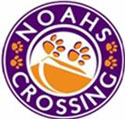History
Two Wells Golf Club
Clair Hart provided the extract for "Life Around the Light" in 1985.
Two Wells Golf Club was formed in 1931 with its president Sgt Copeland and secretary Sam Lienert. The first champion was Sgt Copeland and first lady champion Alex Henwood.
The first course of nine holes was situated on a council reserve in front of the Tavern Hotel. Three of the holes were in Buckland Park, which adjoined the area. The course was altered from time to time and holes were later in the Two Wells area and continued across the new main oval to near the cemetery. Some 30 cows and many horses were the main hazards in more ways than one. Play was on Sundays; it was a social occasion where boy met girl.
In 1946 after the war, play commenced on Saturdays. In 1949 the club moved to a private course on the Hicks property and the club paid 18 pounds a year. It was during this period that an enthusiastic group of players, under the guidance of Bill Anderson, built a nine-hole course. Work commenced after the bakehouse had cooked the daily bread.
For many months they worked, even through summer, in a backbreaking exercise, crosscut saws being the major weapon. Play commenced in 1951. Ron Applebee was the first to hole in one. It was fitting as he had worked hard to establish the course. Frank Pritchard achieved it later.
The club paid the council 30 pounds a year, however this sum was recouped by letting it for sheep grazing for a similar amount. Fairways were burnt off early in April and the sheep were the only mowers. In 1963 the club had a 12-hole course and secured a 50-year lease for 10 pounds a year. This was conditional on the club to keep the area free of noxious weeds and rabbits. The council appointed two trustees, Neil Halliday and Clair Hart to be responsible.
An important agreement was negotiated with the Flora and Fauna Society. The conditions were that use of the area to play golf would be terminated if the club failed to protect native trees and flora. It is pleasing that this beautiful area has been jealously preserved in its natural condition. However, at least 200 tons of sand was used to fill in hollows to make mowing possible. Also tones of stones were carted away in wheelbarrows. One remembers the efforts of Ada Frost.
The first club house was a brush shelter; a toilet to serve all was in the scrub. Many golfers had young families so sandpits and a swing were provided. Some of the players presently in the club were playing in the sandpits at that time. The first husband and wife trophy was won in 1952 by Clair and Audrey Hart.
An early necessity was for every player to supply their own scraper; these were made of wood and carried in golf bags- there were no buggies in those days. All scrapes were of shell grit, slag was not used until 1960.
Refreshments were BYO; the club had a kerosene fridge. The first bldg was a shed, donated by Bruce Treasure and it was cut in half and carried there on Mel Hood’s and Clarrie Pedricks trucks. Charlie Williams and the others helped to rebuild it. The club later purchased a war-time housing trust house for 50 pounds- it cost 80 pounds to transport it there. Les (Nig) Williams helped put it in order. Later a similar house was purchased and the two were joined together. Jack O’Malley and Max Aufderheide were the chief builders. A kitchen and toilets were incorporated, also a large window and a bar. John Oliver carted most of the supplies. The garage which had been built earlier was used as a bar on open days until the new bar was operational.
The club was blessed with many fine secretaries and presidents- Dean Lamont, Eddy Jarmyn, Brian Bussenschutt, Mr Smith, Clair Hart, John Oliver, Mel Hood, Jim Alcock, Robin Prettijohn, Joe Thompson, Keith Applebee and Peter Belcher. Graham Applebee won many championships as well as helping with many of the clubs activities.
In 1955 a greater part of the course was flooded and also the road. Players met on the Gawler road and were transported to the course in a truck. No 1 quarry hole remained full of water for the rest of the year. Clair Hart was course manager followed by John Oliver.
Gus Murdoch with a sit-on mower spent many hours mowing the course; at the same time Colin Hall held the position of both course manager and bar manager. First life membership for services to the club was awarded to Mel Hood and Clair Hart. Vida Oliver received hers in 1982.
In 1983 the club purchased 20 acres of land adjacent and this made it possible to have an 18 hole course. The initiative of this committee should be commended. Over 400 native trees have been planted, which were cared for by Keith Applebee and Peter Belcher who was course manager at the time. In a short time they will provide a lot of joy for some and hazards for others.
In 1955 the ladies held a meeting to discuss the desirability of forming their own club. They became affiliated with the SA Golf Association. They then played matches against Gawler and Mallala, and later invited the Ladies from Virginia to join them. In 1958 the ladies proposed that each family be asked to raise 5 pounds to go towards club house improvements. In 1963, by agreement, they were given the right to manage their own finances. They held their first open day that year.
1984 office holders in the club were Brian Lamont, president; Bob Oxlade, Captain’; Keith Applebee, secretary. Course managers Cliff Schultz and Clive Evans. For the ladies, Molly Darlitz president and Vida Oliver captain.

